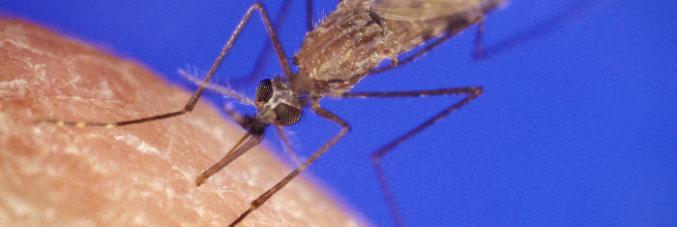
International Research: Using CRISPR-mediated Gene Drive Technology to Fight Malaria
03.08.2021
An international research team led by Andrea Crisanti, the Director of the Department of Molecular Medicine at the University of Padua, has shown that mosquitoes transmitting malaria can be suppressed in a few months. The study was held under a controlled environment capable of reproducing the same environmental conditions found in tropical countries.
This is the first time that this kind of gene drive technology has been proven effective under realistic ecological conditions over an extended period. The study entitled, Gene-drive suppression of mosquito populations in large cages as a bridge between lab and field, published in "Nature Communications" shows how genetically modified mosquitoes can eliminate other mosquito populations that carry malaria onto humans.
There were over 229 million cases of malaria and 409,000 deaths in 2019 alone, this is more than what was reports in 2018. New interventions are desperately needed to eradicated malaria.
The researchers selectively targeted the mosquito species Anopheles gambiae that is responsible for most of the transmission of malaria in Sub-Saharan Africa. There are approximately 3,500 species of mosquitoes worldwide, of which, only 40 species are malaria carriers.
The British (Imperial College) and Italian (Polo GGB, Terni) research team, coordinated by Crisanti, targeted the Anopheles gambiae gene called doublesex. This gene determines whether a single mosquito develops as a male or a female and then selectively alters a region of the doublesex gene that is responsible for female development. While the gene drive propagates to the entire population, it destroys the doublesex gene. This prevents female mosquitoes from developing and generating a progressive imbalance in the fertility of the male/female ratio until the mosquito population collapses.
Andrea Crisanti explains, "The results of the study suggest that by releasing gene drive mosquitoes that selectively inactivate the doublesex gene, therefore releasing infertile female within the mosquitoes population carrying malaria in the local region can lead to the collapse of that specific species carrying malaria. We also observed that both heterozygous males and females carrying only one copy of the modified doublesex gene show no changes. However, females with two copies of the modified gene show both male and female characteristics, but that they are no longer able to sting nor can they lay eggs.”
Previously, the researchers had shown that their gene drive technology could eliminate Anopheles gambiae populations in small cages within 7-11 generations by inhibiting reproduction. However, to see if the gene modification could successfully result in the same collapse under real-world conditions, the team moved on to testing the technology in much larger cages that mimic the mosquito's natural habitat.
These cages contained hundreds of mosquitoes of different ages, representing a more natural and complex population structure. The cages were also temperature, humidity and light-controlled and contained a range of feeding, resting and spawning sites that allowed the mosquitoes to exhibit natural foraging and mating behaviors, such as swarming. Furthermore, the team did not detect any form of natural resistance to the gene drive, meaning no new modifications have arisen to counter its effect. This suggests that the genetic modification that drives female infertility is also effective in the face of natural selection mechanisms.
Crisanti concludes by saying, "Studies in these ecological conditions are an important step towards the release of mosquitoes that carry gene transmission in nature, although we must bear in mind that there are safety and technology barriers to overcome before it is possible to plan an experiment in the field, including more comprehensive endurance tests and environmental risk assessments.”



